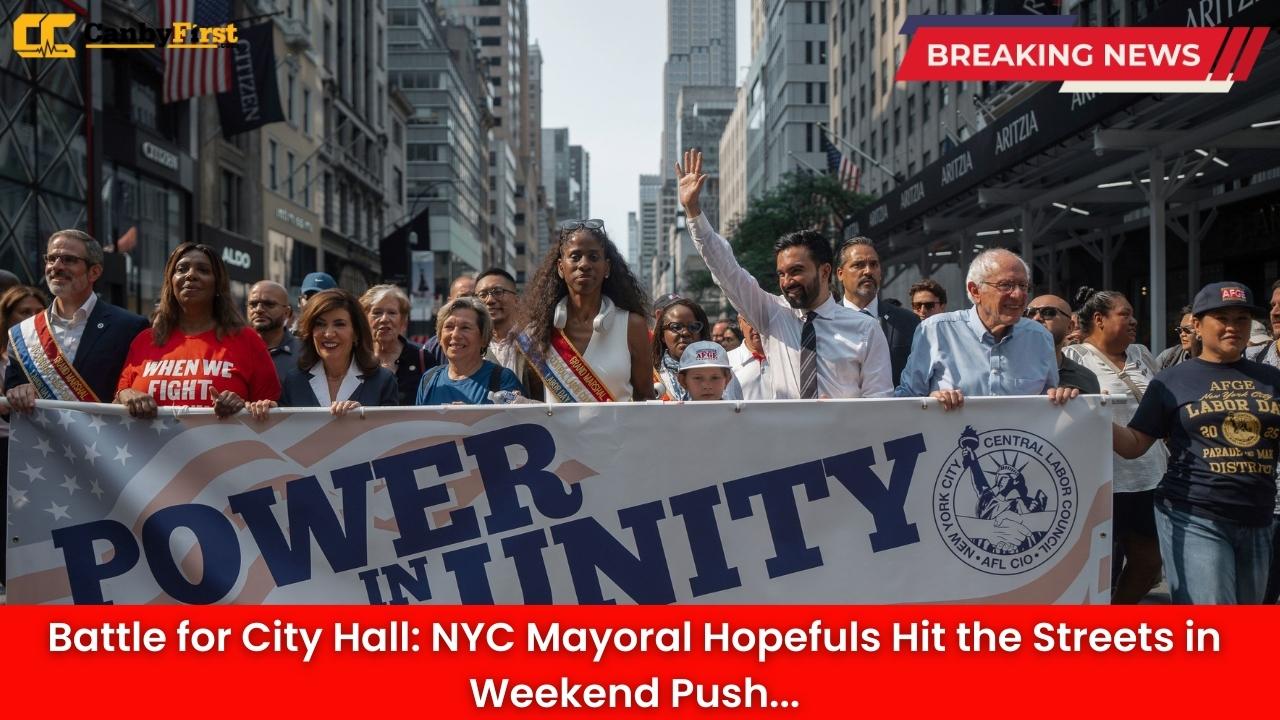New York, US: The race for New York City’s next mayor heated up this weekend as leading candidates fanned out across the five boroughs, staging events aimed at energizing supporters and swaying undecided voters just weeks ahead of Election Day. From community picnics and church appearances to policy-driven town halls, each candidate sought to deliver a sharp message tailored to the city’s diverse electorate.
A Weekend of Visibility
On Saturday morning, the frontrunners wasted no time taking their campaigns to high-traffic neighborhoods. One contender spent the early hours walking through a farmer’s market in Brooklyn, shaking hands with vendors and speaking about food insecurity. Another candidate focused on Queens, where they hosted a youth sports event meant to highlight their investment in after-school programs.
“We’re talking to everyday New Yorkers, not just at rallies, but face-to-face in their communities,” said one campaign staffer, underscoring the importance of presence on the ground.
Also Read
Spotlight on Policy Issues
While the campaign trail often emphasizes personality, many of the weekend’s gatherings pivoted toward urgent policy debates. Public safety, housing affordability, and transit reliability dominated conversations at town halls.
-
One candidate unveiled a housing plan designed to accelerate affordable housing construction, promising to streamline permits and hold developers accountable.
-
Another argued for a robust public safety initiative, pledging to balance crime prevention with police reform, while promoting community-based safety programs.
-
Transit also became a flashpoint, as one contender pledged to push for system upgrades and expanded service, calling reliable public transportation “the lifeline of the city’s workforce.”
Reaching Key Voter Blocs
New York City’s electorate is famously diverse, and candidates tailored their events accordingly. In Harlem, a community forum centered on small business recovery drew a lively audience, while in Staten Island, a rally focused on property taxes spoke directly to a major concern among homeowners.
Faith-based outreach also played a role. Multiple candidates attended Sunday church services, taking the stage alongside local faith leaders who introduced them to congregations as potential moral and civic stewards of the city.
The Energy on the Ground
With turnout projected to play a decisive role, campaign organizers emphasized not just persuasion but motivation. Volunteers moved quickly to register new voters, distribute flyers, and engage people in conversations about the stakes of the election. In parks, on subway platforms, and at street corners, the ground game was on full display.
“This election is about connecting to the soul of New York,” said one candidate, surrounded by a group of supporters waving campaign signs in the Bronx. “We need to make sure voices from every borough are heard.”
Early Indicators and Challenges Ahead
Despite the energy of the weekend blitz, challenges remain. Polls suggest a significant portion of the electorate remains undecided, leaving the door open for last-minute shifts. The looming mayoral debates, scheduled for later this month, could prove a critical moment in solidifying support.
Observers also note that the candidates are walking a fine line between addressing immediate concerns—such as inflation, crime, and housing pressures—while painting a long-term vision for the city’s future. For many voters, it remains unclear which contender can strike the right balance.
Looking Forward
With Election Day fast approaching, weekends like this one are expected to become even more frenetic. Campaigns are planning neighborhood block parties, subway station meet-and-greets, and high-profile endorsements in an effort to seize momentum.
New Yorkers are accustomed to vibrant, sometimes chaotic elections, and this year’s contest appears no different. As one voter put it after attending a community rally in Queens, “It’s good to see them out here with us. Now we just have to figure out who can really deliver.”












